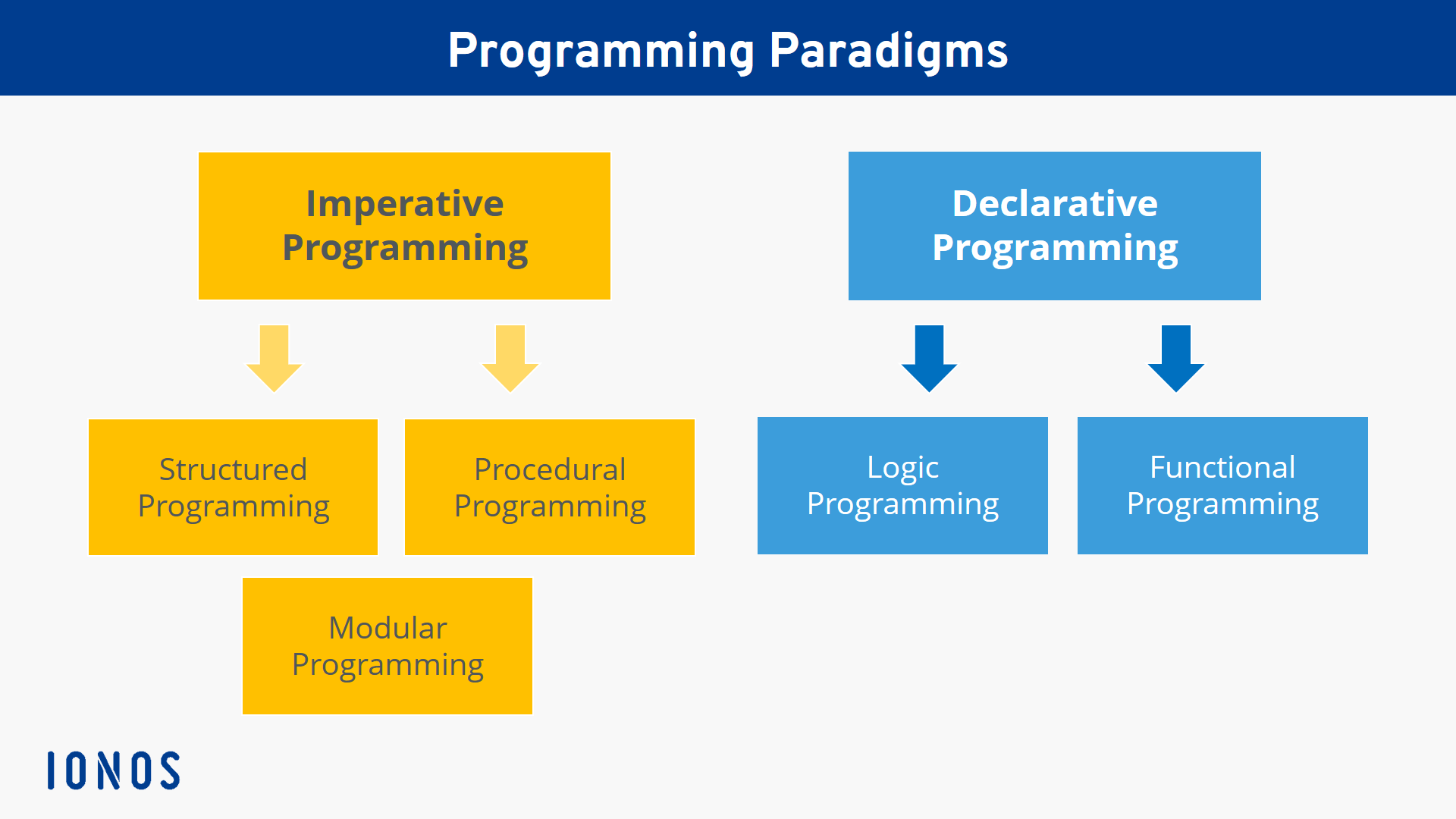Declarative language, a paradigm shift in programming, has emerged as a powerful tool for software development. Unlike imperative languages that focus on specifying how to perform tasks, declarative languages describe what needs to be achieved, leaving the implementation details to the system.
This approach offers numerous benefits, including enhanced code readability, maintainability, and expressiveness.
In this comprehensive guide, we will delve into the fascinating world of declarative languages, exploring their types, syntax, semantics, advantages, challenges, and real-world applications. Get ready to unlock the potential of declarative programming and elevate your coding skills to new heights.
Defining Declarative Language

Declarative languages are a distinct programming paradigm that focuses on expressing the logic and constraints of a problem, rather than specifying the exact steps or flow of control.
They empower programmers to define what they want to achieve without getting bogged down in the intricate details of how it should be done. This approach offers several advantages, including increased code readability, maintainability, and expressiveness.
Key Characteristics, Declarative language
- Emphasis on Logic and Constraints:Declarative languages prioritize expressing the logic and constraints of a problem, allowing programmers to focus on the problem domain rather than the implementation details.
- Abstraction from Control Flow:Unlike imperative languages, declarative languages do not explicitly specify the order of operations or the flow of control. Instead, they rely on the language’s built-in mechanisms to determine the most efficient execution path.
- Declarative Syntax:Declarative languages use a syntax that is closer to natural language, making them easier to read and understand, especially for non-programmers.
- Declarative Semantics:The semantics of declarative languages are defined in terms of the logical relationships between the elements of the program, rather than the sequence of operations.
Examples
Some popular declarative languages include:
- SQL:A database query language used to retrieve and manipulate data from relational databases.
- XQuery:A language for querying and transforming XML documents.
- Prolog:A logic programming language used for symbolic reasoning and expert systems.
- Datalog:A declarative language used for querying and manipulating graph-structured data.
- RuleML:A markup language for representing and exchanging rules in a declarative manner.
Types of Declarative Languages
Declarative languages encompass a diverse range of specialized languages, each tailored to specific purposes and domains. These languages empower users to express their intent and desired outcomes without explicitly specifying the procedural steps to achieve them.
The primary types of declarative languages include:
Query Languages
Query languages, such as SQL and XQuery, are designed to retrieve and manipulate data from databases. They enable users to formulate queries that specify the desired data without specifying the specific retrieval methods.
Strengths:
- Concise and expressive syntax
- Efficient data retrieval and manipulation
Limitations:
- Limited procedural capabilities
- Not suitable for complex data transformations
Rule-Based Languages
Rule-based languages, such as Prolog and Datalog, are used to define and apply rules to data. They allow users to specify relationships and constraints among data elements and derive new knowledge through logical inference.
Strengths:
- Declarative and logical approach
- Ability to represent complex relationships
Limitations:
- Limited expressiveness for certain tasks
- Can be computationally expensive for large datasets
Logic Programming Languages
Logic programming languages, such as Prolog and Mercury, combine the features of rule-based languages with the power of logical reasoning. They enable users to define facts and rules, and use logical inference to derive new facts and relationships.
Strengths:
- Declarative and expressive syntax
- Powerful logical reasoning capabilities
Limitations:
- Not suitable for all types of problems
- Can be computationally expensive for certain tasks
Constraint Programming Languages
Constraint programming languages, such as Prolog IV and Oz, are used to solve constraint satisfaction problems. They enable users to define constraints and relationships among variables, and the language finds a solution that satisfies all the constraints.
Strengths:
- Declarative and expressive syntax
- Powerful constraint solving capabilities
Limitations:
- Not suitable for all types of problems
- Can be computationally expensive for large datasets
Comparison of Declarative Language Types
| Type | Purpose | Strengths | Limitations | Use Cases |
|---|---|---|---|---|
| Query Languages | Data retrieval and manipulation | Concise syntax, efficient data retrieval | Limited procedural capabilities, not suitable for complex transformations | Databases, data analysis, data management |
| Rule-Based Languages | Rule definition and application | Declarative and logical approach, complex relationship representation | Limited expressiveness, computational expense for large datasets | Expert systems, knowledge representation, data mining |
| Logic Programming Languages | Fact and rule definition, logical reasoning | Declarative and expressive syntax, powerful logical reasoning | Not suitable for all problems, computational expense for certain tasks | Artificial intelligence, natural language processing, theorem proving |
| Constraint Programming Languages | Constraint satisfaction | Declarative and expressive syntax, powerful constraint solving | Not suitable for all problems, computational expense for large datasets | Scheduling, resource allocation, optimization problems |
Syntax and Semantics of Declarative Languages

Declarative languages feature unique syntax and semantics that set them apart from imperative languages. Their syntax often resembles mathematical or logical expressions, prioritizing the declaration of facts and relationships rather than specifying a sequence of commands.
The semantics of declarative languages focus on defining the meaning of these declarations, enabling the system to infer conclusions and derive new knowledge. Logic and mathematical concepts play a crucial role in this process, providing a formal framework for representing and reasoning about the declared information.
Code Examples
Consider the following Prolog code:
father(john, alice).father(john, bob).mother(mary, alice).mother(mary, bob).
This code declares facts about family relationships using a subject-predicate-object syntax. The system can then infer additional relationships, such as:
sibling(alice, bob).
This inference is possible due to the underlying logic and semantics of Prolog, which define the meaning of the declared facts and allow the system to derive new knowledge.
Benefits of Declarative Languages
Declarative languages offer significant advantages over imperative languages, making them a compelling choice for many software development tasks. Here are some key benefits:
Improved code readability and maintainability:Declarative languages emphasize describing the desired outcome rather than specifying the exact steps to achieve it. This results in code that is easier to read, understand, and maintain, especially for complex systems with intricate logic.
Enhanced expressiveness:Declarative languages provide a concise and expressive syntax that allows developers to capture complex relationships and constraints in a clear and concise manner. This can significantly reduce the amount of code required to implement a given functionality.
Real-world examples:Declarative languages have been successfully applied to solve a wide range of complex problems in various domains. For instance, SQL is a widely used declarative language for database querying and data manipulation. XML is another popular declarative language used for data representation and exchange.
Prolog, a logic programming language, has been used in expert systems and natural language processing.
Challenges and Limitations of Declarative Languages
Declarative languages, while offering benefits in terms of expressiveness and maintainability, also come with certain challenges and limitations. These include:
Limited Expressiveness
Declarative languages may not be as expressive as imperative languages, meaning they may not be able to represent all possible computations. This can be a limitation in certain scenarios where fine-grained control over program execution is required.
Trade-Off Between Expressiveness and Efficiency
The expressiveness of a declarative language often comes at the cost of efficiency. Declarative programs can be more difficult to optimize than imperative programs, leading to potential performance bottlenecks.
Reasoning and Debugging
Reasoning about the behavior of declarative programs can be challenging due to their non-deterministic nature. Debugging declarative programs can also be more difficult compared to imperative programs.
Strategies for Overcoming Challenges
To overcome these challenges, several strategies can be employed:
-
-*Hybrid Approaches
Combining declarative and imperative programming paradigms can provide the benefits of both approaches, allowing for expressiveness and efficiency.
-*Optimization Techniques
Advanced optimization techniques can be applied to declarative programs to improve their performance.
-*Program Analysis
Static and dynamic program analysis techniques can be used to reason about the behavior of declarative programs and identify potential issues.
-*Declarative Debugging Tools
Specialized debugging tools designed for declarative languages can aid in the identification and resolution of bugs.
End of Discussion
.png)
As we conclude our exploration of declarative languages, it is evident that this paradigm offers a compelling alternative to imperative programming. With its emphasis on expressiveness, readability, and maintainability, declarative languages empower developers to create complex software systems with greater efficiency and ease.
While challenges exist, the benefits of declarative programming far outweigh the limitations. As technology continues to advance, we can expect declarative languages to play an increasingly prominent role in shaping the future of software development.
Question Bank
What are the key characteristics of declarative languages?
Declarative languages are characterized by their focus on describing what needs to be achieved rather than how to achieve it. They emphasize code readability, maintainability, and expressiveness, often using logic and mathematical concepts in their design.
What are the different types of declarative languages?
Declarative languages can be classified into various types based on their purpose and functionality, including logic programming languages (e.g., Prolog), functional programming languages (e.g., Haskell), and constraint programming languages (e.g., Prolog).
What are the advantages of using declarative languages?
Declarative languages offer numerous advantages over imperative languages, including enhanced code readability, maintainability, and expressiveness. They also enable developers to focus on the problem domain rather than the implementation details, leading to increased productivity and reduced development time.
What are the challenges associated with declarative languages?
Declarative languages can sometimes face challenges in terms of efficiency and expressiveness. However, with careful design and optimization techniques, these challenges can be overcome to harness the full potential of declarative programming.